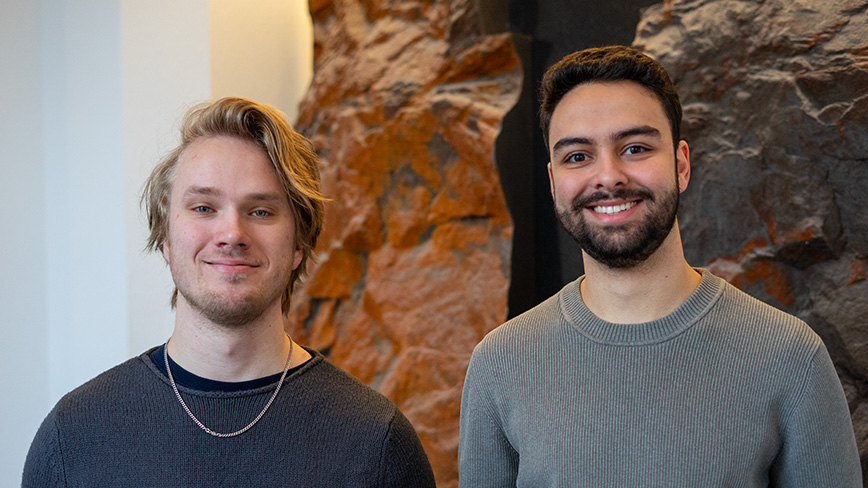Innovating education: KTH Cloud's journey from concept to reality

Two students from the Computer Engineering programme in Flemingsberg built a cloud service as a degree project. Since then, Pierre Le Fèvre and Emil Karlsson have built on the concept and can now offer both students and researchers in Flemingsberg to run their software projects on the cloud.
The KTH Cloud service began as a discussion between teachers Jonas Willén and Reine Bergström and computer engineering students Pierre Le Fèvre and Emil Karlsson about the idea of a "software makers' space". It became a degree project for Emil and Pierre under the supervision of Harsha Krishna, a PhD student at the Department of Health Informatics and Logistics.
How have you worked on the project?
" There has long been a need for a dedicated cloud service for students at the Flemingsberg campus. The goal has been to create a service that is useful for both students and researchers, but also to teach how everything is built and to promote interest in the cloud among other students," Pierre and Emil explain.
“In the past, students have used free options from Amazon, Google or Microsoft, but they can be complicated for beginners and if you get it wrong, it can cost you money. In addition, there is an increasing need for graphics processing units (GPUs) for machine learning, which always costs money on the commercial solutions available.”
” We have endeavoured to be as transparent as possible, for example we have used open-source code so that anyone who is interested can go into detail on how things work. We also have an open community on Discord, where anyone can ask for help or discuss together.”
Apart from the limitations of free services, what are the benefits of having your own cloud service?
” Running code on the large public clouds, known as hyperscalers, is unsustainable for education, both in terms of price and support. All students
have their own accounts that cannot be monitored on a public cloud service. There is also a high risk of students overspending on resources. Most cloud services use "pay as you go" and mistakes can be costly.”
” It is also difficult to find free server power for the kind of hobby projects that students learn a lot from. By having their own cloud, teachers can keep a better eye on how students are doing and can help them more effectively. The cloud also comes with a very low barrier to entry, giving more freedom to students to actually learn how to run their projects and even build a portfolio.”
Are there advantages to having your own cloud service for researchers too?
“Absolutely. They do not have to chase licences and other ongoing cloud costs and can use top hardware without having to spend time on all the administration."
This became a research paper presented at a conference in Paris, tell us more!
”The goal of our makerspace in Flemingsberg, Spaces, is to explore how a makerspace can be used for more than electronics. With the cloud, we think we have found a concept that works, and we want to spread it to other universities and discuss with industry.”
What's next for you two?
“After studying Computer Engineering in Flemingsberg, we entered the master's programme Software Engineering of Distributed Systems. Right now, we are both doing thesis work at a company in Solna that makes innovative solutions for live broadcasting.”
“We will continue developing and managing the cloud for a few more months before Harsha Krishna, PhD student at the Division of Health Informatics and Logistics, takes over completely.”
Text and photo: Åsa Karsberg

